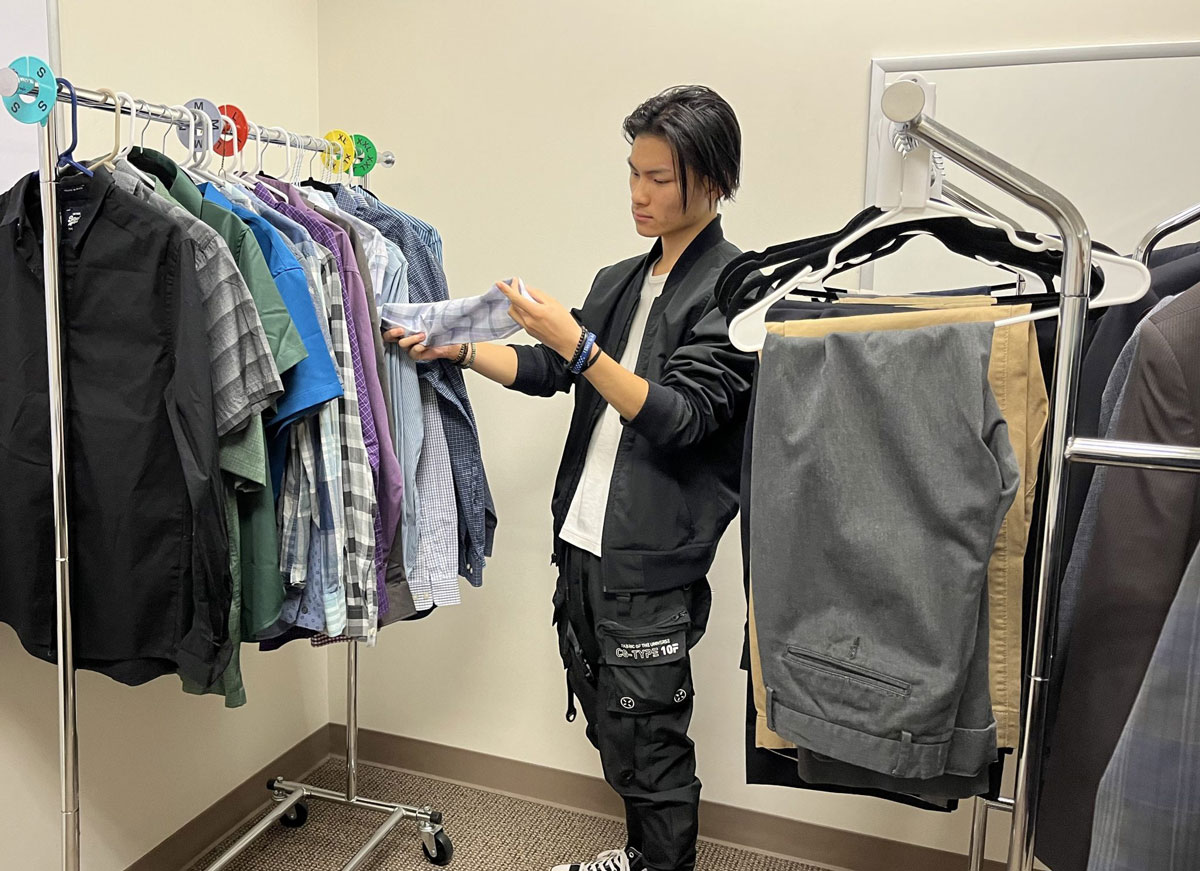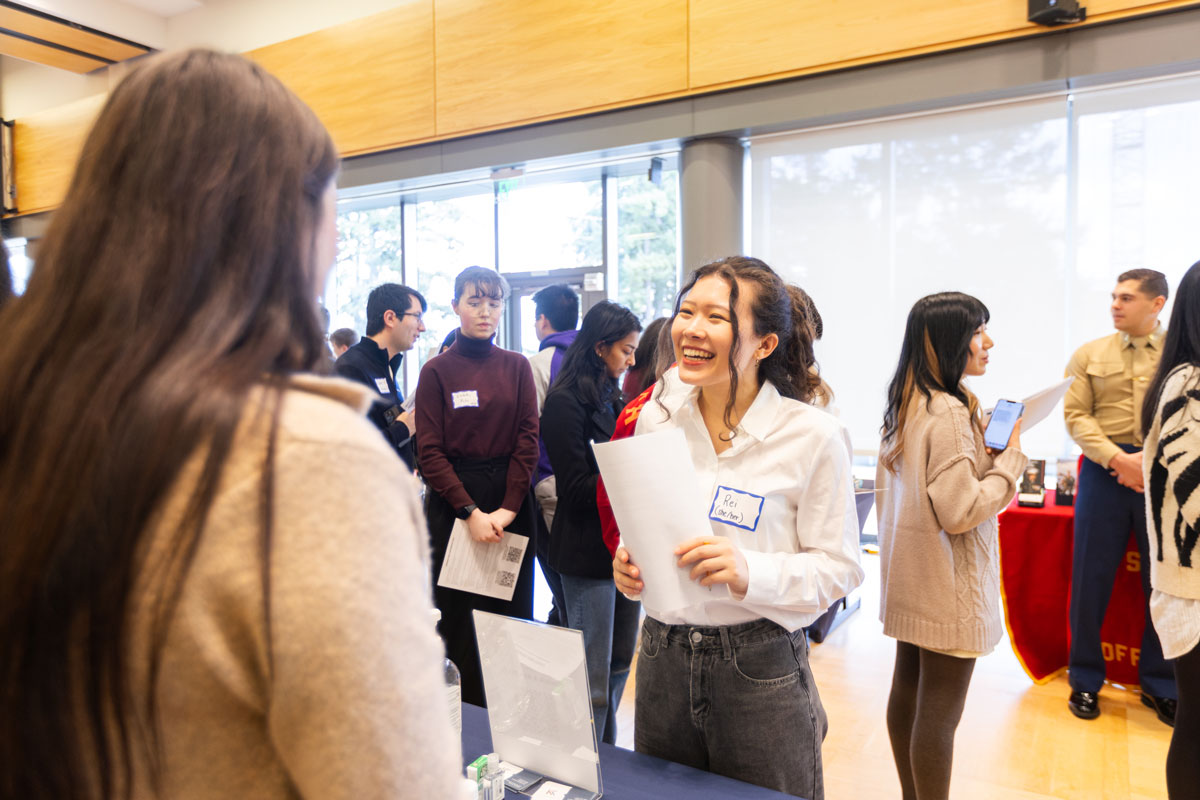Husky Career Closet provides free professional attire for job-seeking students
From interview suits to confidence boosts, the Husky Career Closet outfits students for the professional world.

Students can browse the Husky Career Closet privately and try on professional clothing.
Blazers, blouses, sweaters and bags—everything a student might need to make a strong first impression at a job fair or interview is tucked away in two rooms at the Career & Internship Center in Mary Gates Hall. This fall, the Husky Career Closet is gearing up just in time for job fairs and early recruitment season. It’s also preparing for the winter, when a large wave of recruiters will hit campus looking for next summer’s interns and new hires.
The closet offers hundreds of pieces of free professional clothing, including accessories. Each quarter, students from the Seattle campus can each select one complete outfit at no cost.
“We started the closet as a pop-up back in 2019 because students didn’t have the professional wear they needed to put their best foot forward,” says Briana Randall, director of the Career & Internship Center. By 2022, the center realized the demand was too high for a temporary set up and opened a permanent space for daily visits. “Once school starts, we struggle to meet the student demand,” Randall says. “We’re always in need of professional clothes.”

The Husky Career Closet is always looking for donations of professional clothes to meet student demand.
The center welcomes donations of new and gently used professional clothing, particularly items like blazers, button-down shirts, belts and ties. And new shoes.
Monetary donations also make a difference, helping staff purchase size-inclusive and culturally affirming clothing to fill gaps in inventory.
Last year alone, nearly 330 students visited the Husky Career Closet. The center partners with the Office of Minority Affairs & Diversity to make sure first-generation students and those with financial need know the resource is available.
“We had nearly 330 users last year,” Randall says. But “if we had enough resources, we could definitely serve more students.”